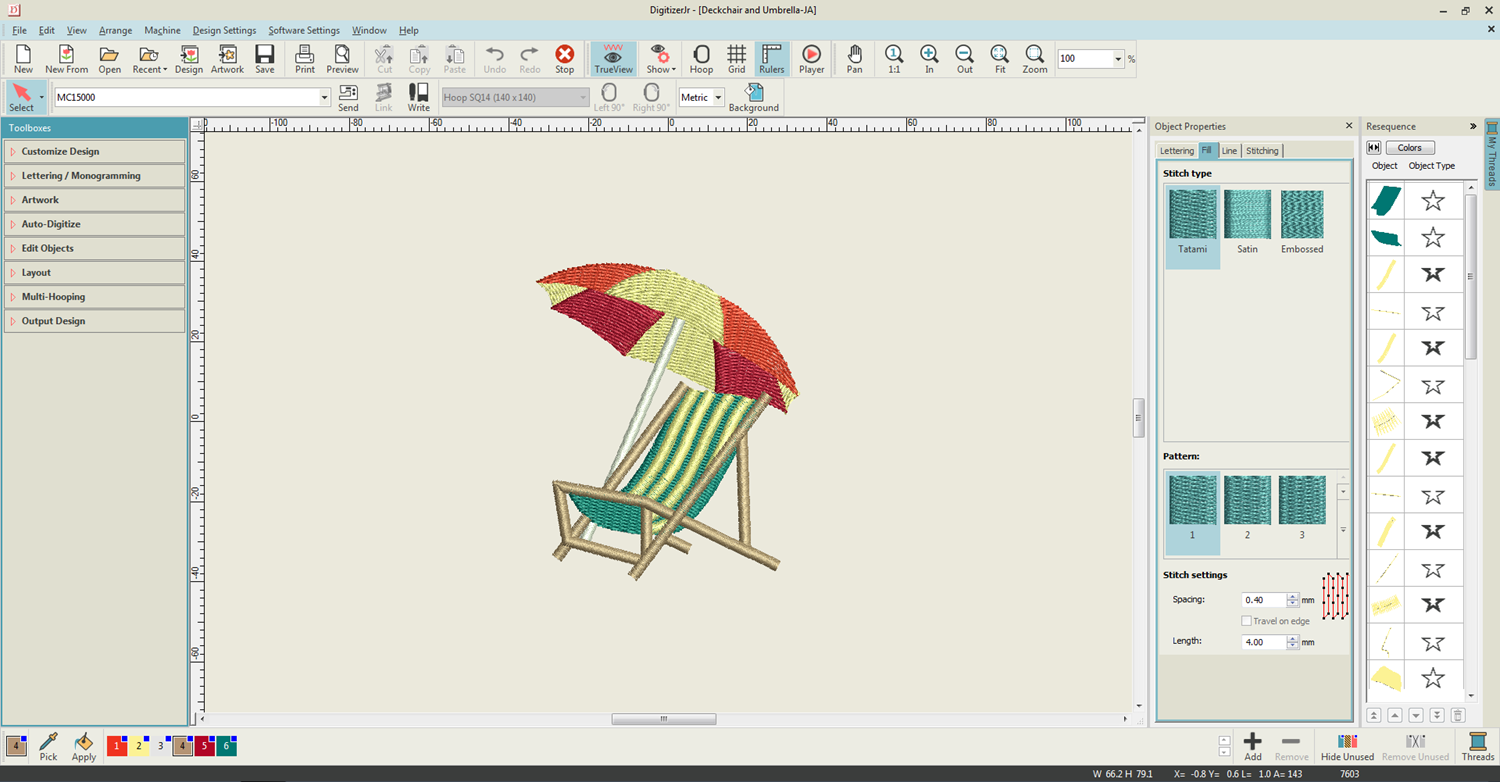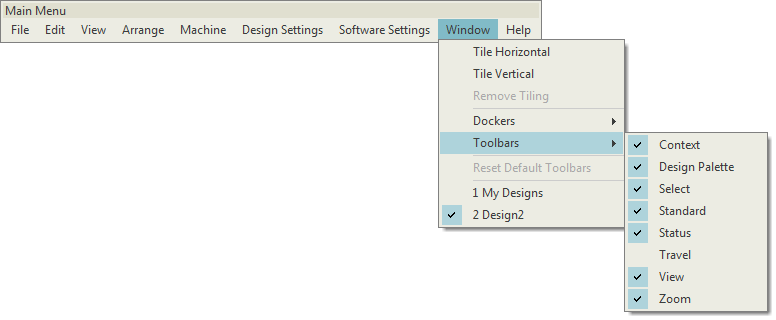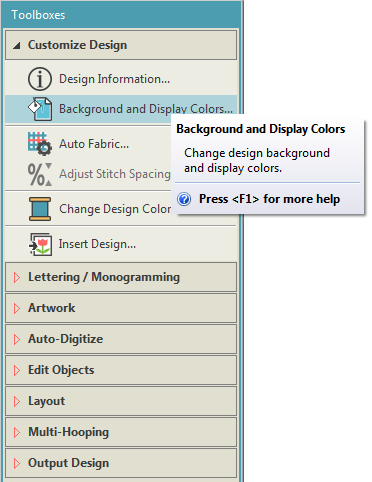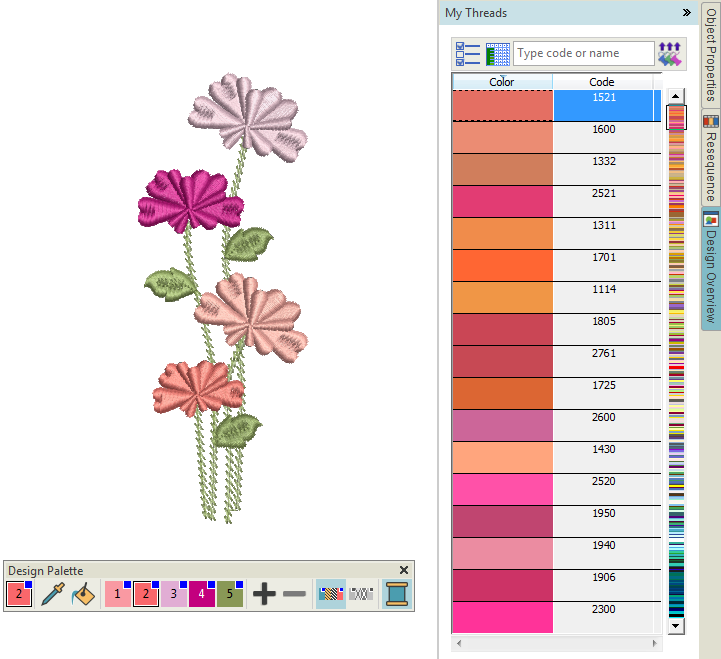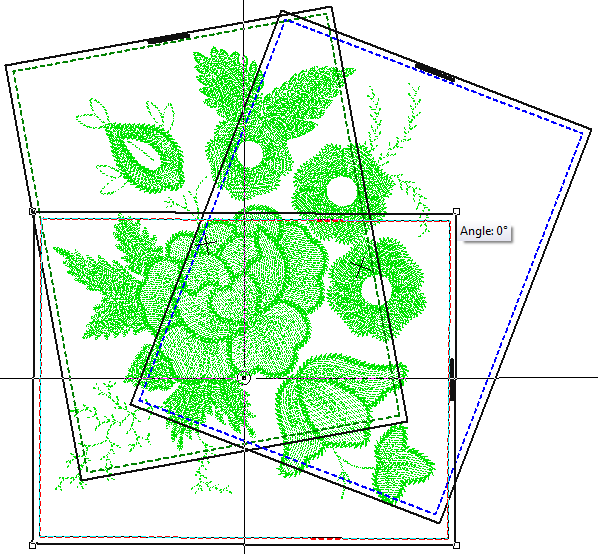The user interface
The embroidery software can be opened via the desktop icon or MS Windows® Start menu. It defaults to embroidery mode which divides into the functional areas listed in the panel to the right.
Design window
Your embroidery software has a single workspace or ‘design window’ but you interact with it in different modes. The default is of course embroidery mode. This allows you to modify or create embroidery designs using the extensive toolset. You can have multiple designs open simultaneously and toggle between each via the design tabs.
Menu & toolbars
The main menu and toolbars are normally docked at the top of the screen above the design window. Use both to access common commands.For a list of available toolbars, go to the Window menu...
The software includes a 'Context' toolbar which changes according to the selected tool. If you have no tools selected, you will see a machine list, a hoop list, as well as output functions relevant to the selected machine. Here you can also set your measurement units - Metric or U.S. - as well as adjust screen background settings.
Toolboxes
Toolboxes are like toolbars in that they contain software tools. However, each toolbox represents a typical scenario you will be engaged in, such as customizing designs or editing objects. Some tools may appear in more than one context. As such, toolboxes are organized in order of common operations.
Dockers
The software includes a number of ‘dockers’ for key functions. These include operations to do with thread selection, object sequencing, cutwork, ‘carving stamps’, as well as viewing and modifying object properties. Dockers are normally docked to the right of the design window. They may also be ‘floated’ by dragging the caption bar to the design window or double-clicking. For a list of available dockers, go to the Window menu.
In embroidery mode, there are a number of dockers you will make constant use of:
| Docker | Purpose |
|---|---|
| Design Information | Access design properties including design 'stop sequence' and user-defined summary information. |
| Object Properties | Use this together with the Context toolbar to access and modify the many properties of selected embroidery objects. |
| Resequence | Offers an easy way to selectively view and resequence color blocks and objects in designs. |
| My Threads | Allows you to select thread charts and assign threads to the current design. The My Threads docker works in conjunction with the Design Palette toolbar. |
Status bar
A Status Bar at the bottom of the design window provides continuous display of current cursor position status as well as instructions for use of selected tools.
Multi-hooping mode
Below is a screen image from the multi-hooping workspace which is accessed via the Multi-Hooping toolbox. If your embroidery is too large or contains a number of designs spaced around an article, you can split it into multiple hoopings. This means you can create embroidery designs that are larger than can be stitched in a single hooping. The multi-hooping workspace allows you to set up the position and sequence of each hoop. See Multi-hooping.
